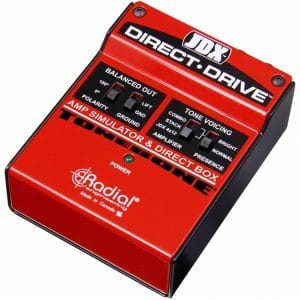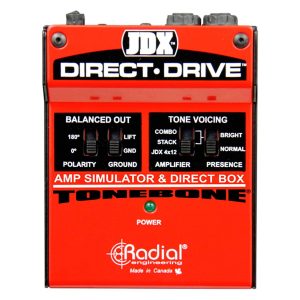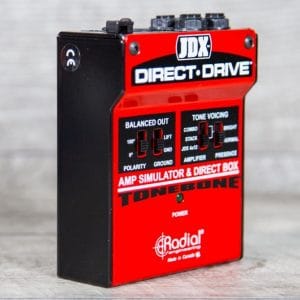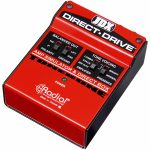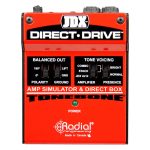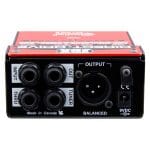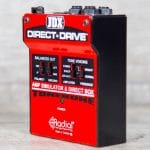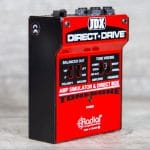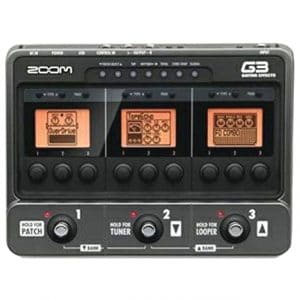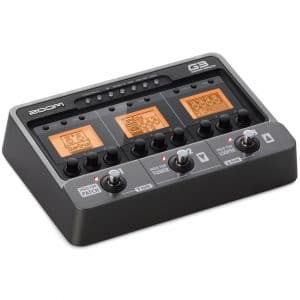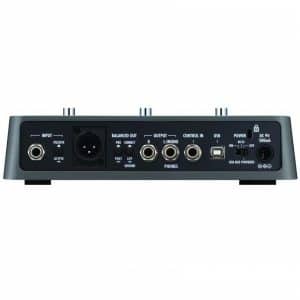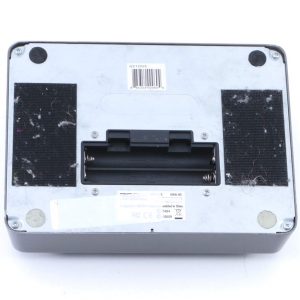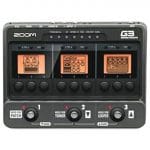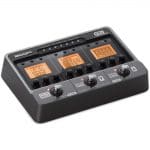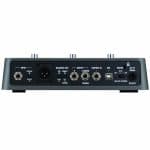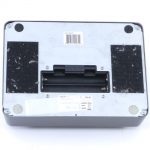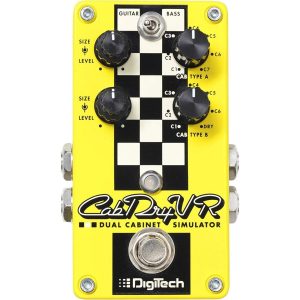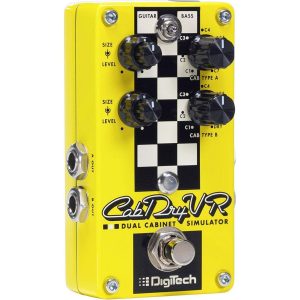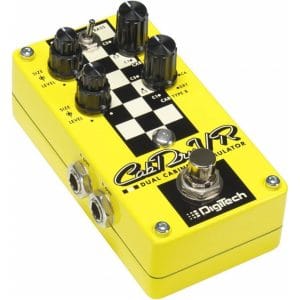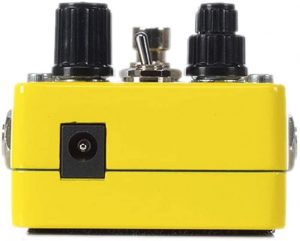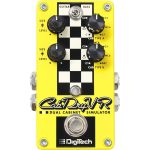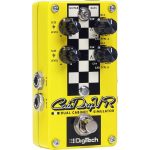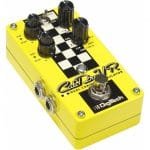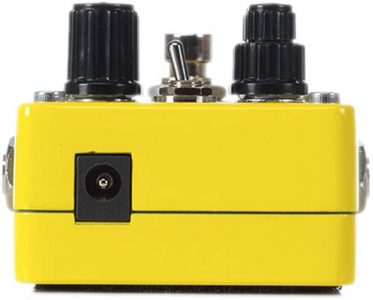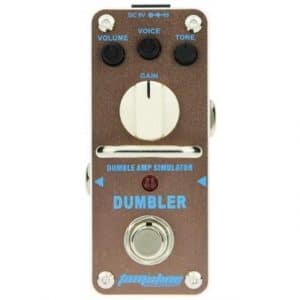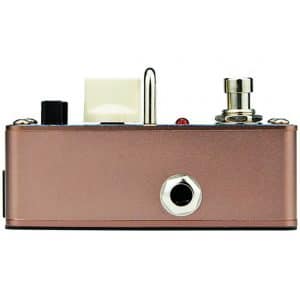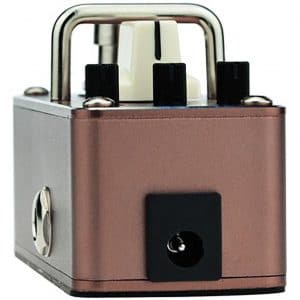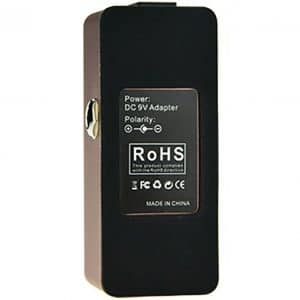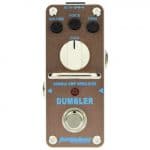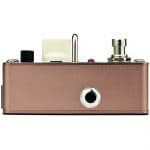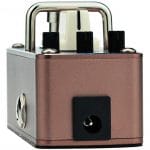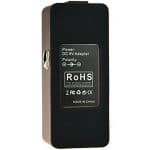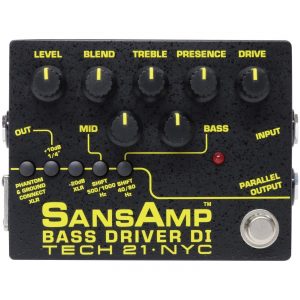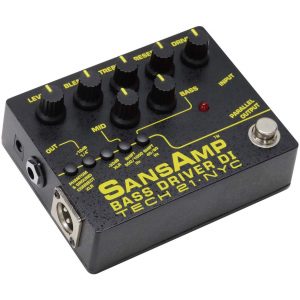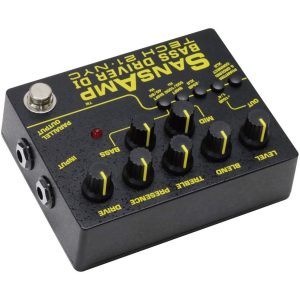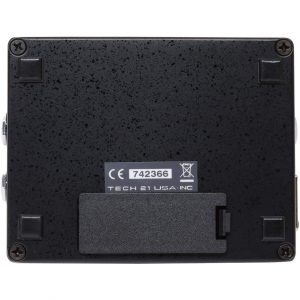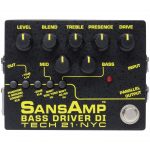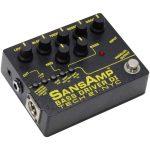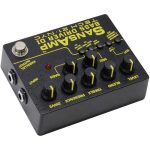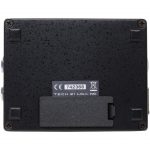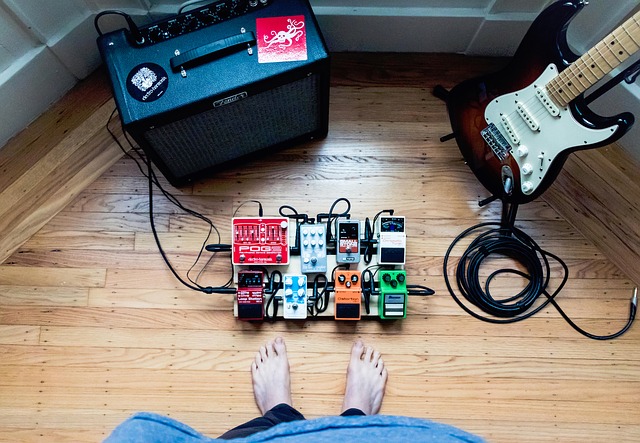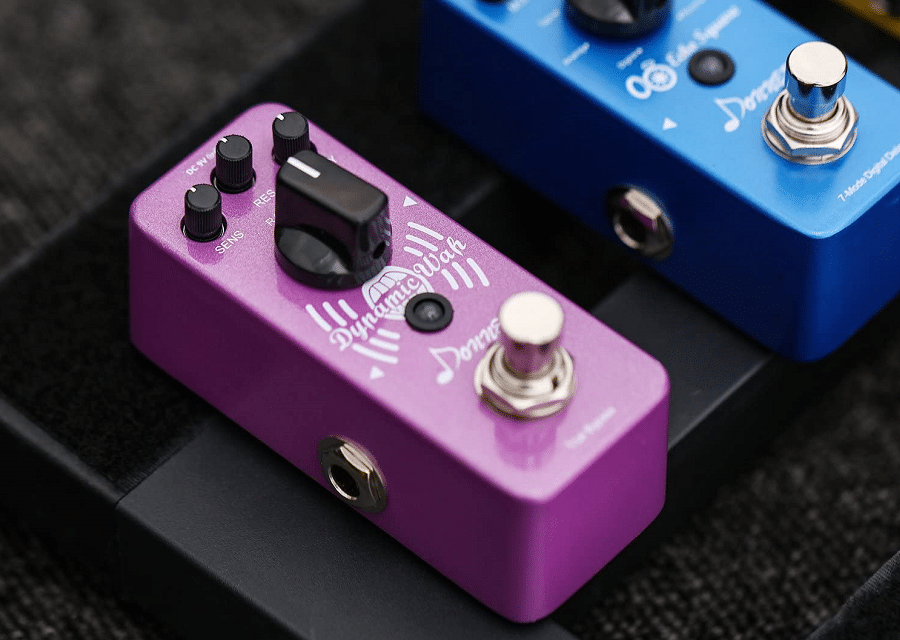Advantages of amp simulator pedals vs overdrive amps pedals
Different pros and cons may affect your buying decision when it boils down to amp simulator pedals versus overdrive amp pedals. First, you need to understand what each of these options does.
Overdrive pedals are typically confused with distortion pedals, but they function differently. These pedals drive your valves to the point of distortion or at least mimic the sound of what distortion would sound like coming from a solid-state amp. The purpose of these pedals is to mimic the sound of you turning up your valve amp as loud as it can go, but the overdrive pedal is a much safer option than actually blasting your valve amp. It provides the same dynamics and offers a softer clipping sound that’s meant to be smooth and versatile.
Amp simulator pedals, on the other hand, are designed to be amps that are more portable and cost-friendly. A good enough simulator can replace an amp entirely, and may even sound better in live performances than a standard amp because they can transfer the sound more evenly through a PA system. They can also handle a range of effects such as reverbs and delays, distortion and overdrives, flangers and compressors, and many more. They aren’t limited to one kind of sound alteration, and that’s what helps to make them stand out as the preferable option over overdrive amp pedals to many.
Features to consider when choosing amp simulator pedals
When searching for the best amp simulator for your particular needs and sound goals, there are a lot of factors that you should consider and take into account before committing to a purchase. That’s because these units can be pricey, and the costs will most certainly add up if you haven’t done the necessary research. So here, we’ll give you a run-down of things to look for when you compare units.
Power source
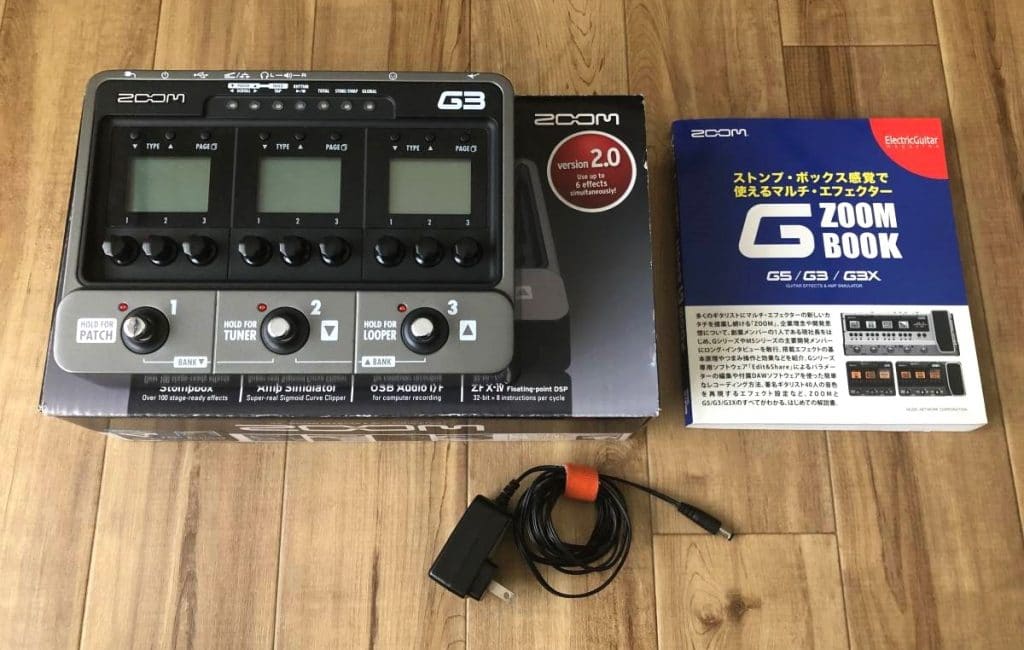
Even the best amp simulators need a power source. Most units will run off of either batteries or a power supply, and some will even have the option to choose either or. You may need to purchase an adapter separately, like with the Tomsline ADR-3 Dumble Simulator. However, most units, such as the Zoom G3, will come with an adapter included in the purchase. If you go for a model that can use batteries instead, like the Tech 21 SansAmp, you’ll want to make sure to purchase the appropriate battery size and voltage, and avoid using any that may have shipped with the product, as they may be damaged in transit or near the end of their life after being tested before shipping.
Inputs and Outputs
The input of your amp simulator pedal is where you’ll plug in your guitar or bass, and the output jack will be connected to whatever system you want the sound to play through, be it a standard amp, a PA system, or some other outlet. Some amp simulator pedals will have multiple input and output jacks, which will allow you to connect multiple instruments, outlets, or even other pedals.
Variety of tones
You can use a high-quality amp simulator pedal to achieve a plethora of tones when you play. Some will provide equalization, which will boost or cut the proportions of your frequency response entirely.
You should look for pedals that can equalize as well as compress your tones, which will reduce the variation of volumes between the peaks and troughs of your signal. This evens out the average volume, making it more consistent.
Many amp simulator pedals will also have options for distortion, fuzz, and overdrive effects, which will also affect your sound.
Switches and controls
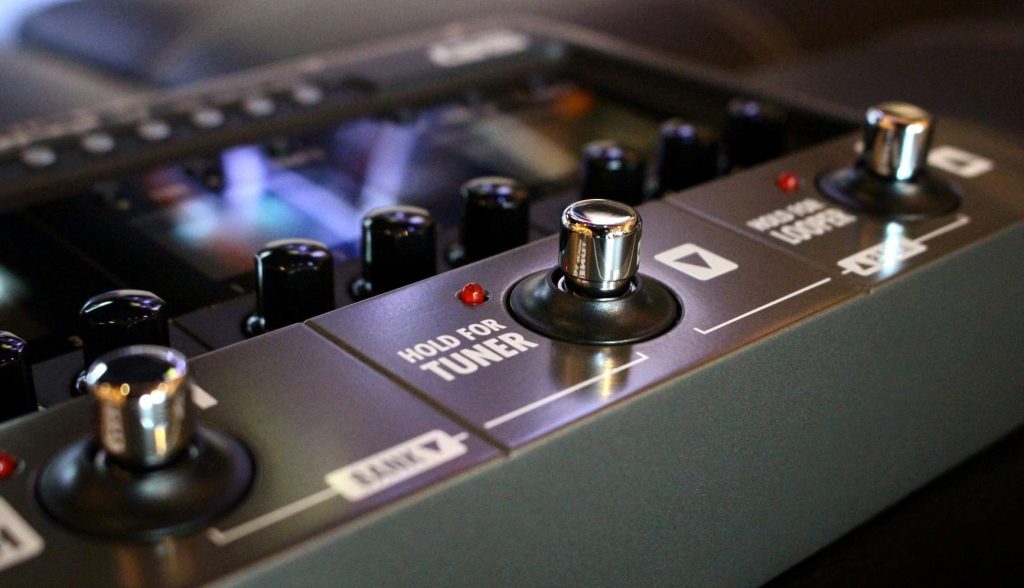
If you want the best, most customizable and unique sound you can get, you want an amp simulator pedal that has intuitive switches and controls that are easy to use, easy to read, and will give you a wide range of factors to tweak to your liking. Some pedals will have more options and features than others and may have more controls as a result. Keep in mind that the more controls, switches, or knobs on a unit, the larger it will be and the less space it will leave on your pedalboard, but that it will ultimately give you more control of the sound you’re putting out.
Size and weight
The entire point of an amp simulator pedal is to increase not only your productivity and the quality of your sound, but also to do so while offering unparalleled convenience when compared to a full-sized amplifier. Different models of simulator pedal will come in different sizes and weights, so you need to find one that you would be comfortable working with. Some, like the Tomsline ADR-3 Dumbler, are lightweight but have slip-resistant backing on them, so they won’t be easily moved or disturbed while in use.
Durability
The durability of an electronic piece of equipment should always be one of your top priorities when shopping. That is especially true when you think about an amp simulator pedal – these units will endure a lot of abuse. From adjustments to being stepped on, you want to be sure the unit you’re looking to purchase is durable, rugged, and dependable under stress. All five of the units reviewed in our guide here have been regarded as dependable by the people who have bought and used them, but it’s something to keep in mind if you look at other pedals.
Warranty
Whenever you buy a product, especially a piece of electronic equipment like these amp simulators, you should always check for a manufacturer’s warranty or any kind of relevant buyer protection initiative. Some may not be listed openly on Amazon, but if you check the manufacturer’s website, many quality, reputable brands will offer some kind of warranty for the products they make and distribute. You always want to be cautious and take the extra step to be sure your purchase, especially one potentially related to your career, is protected.






